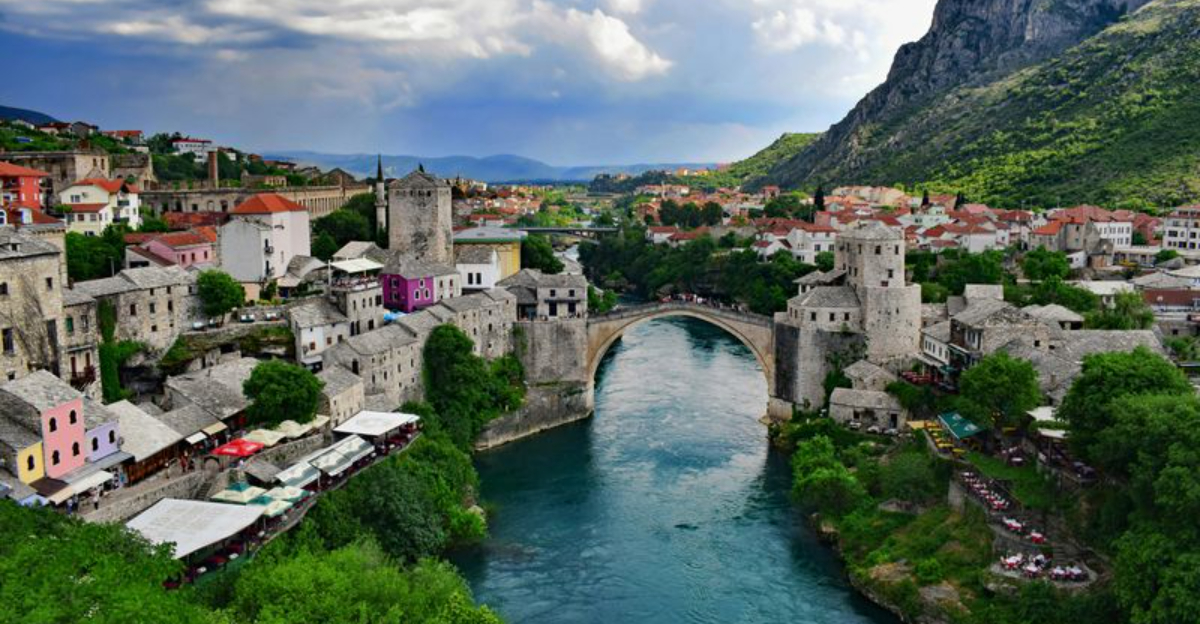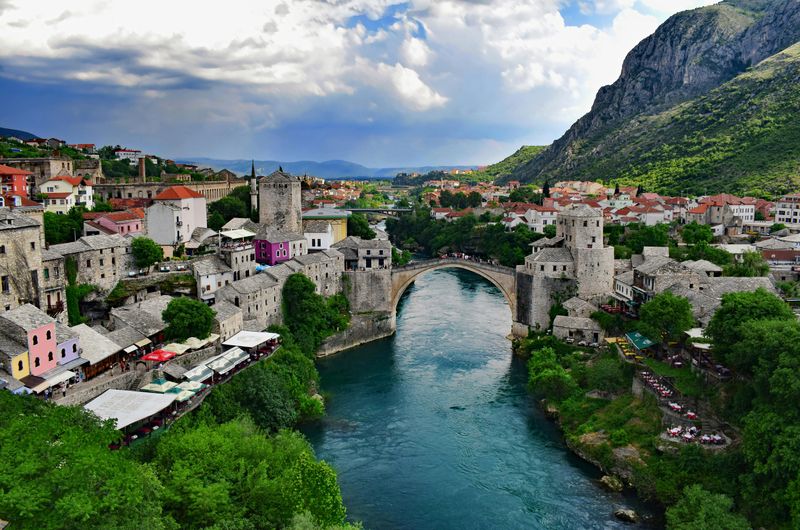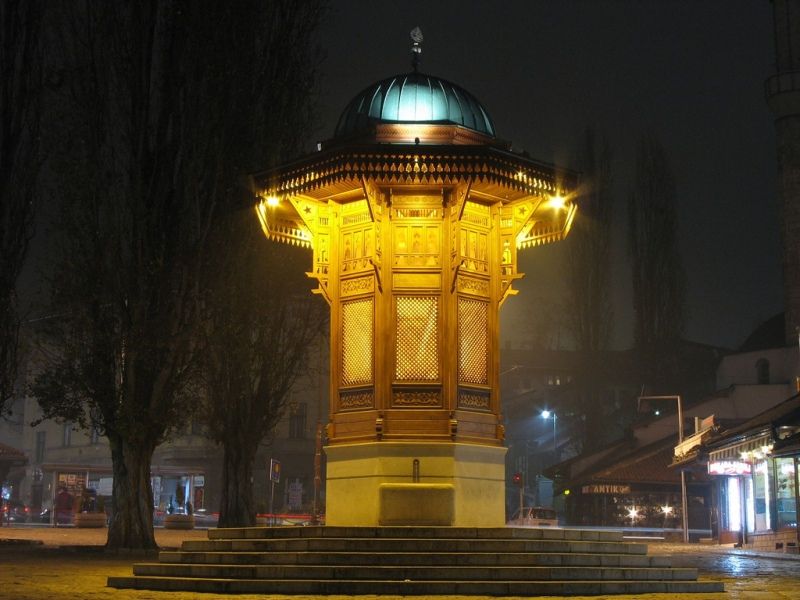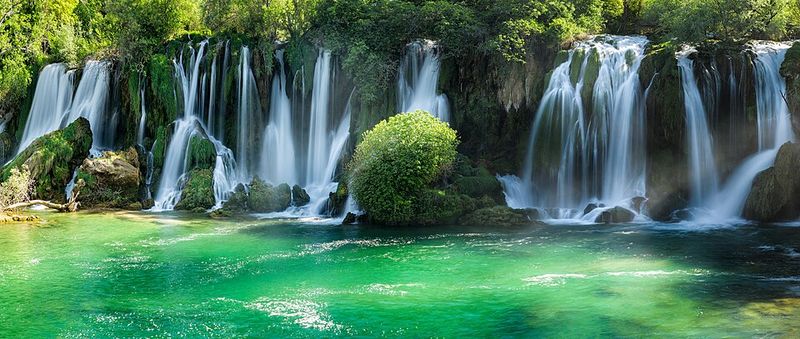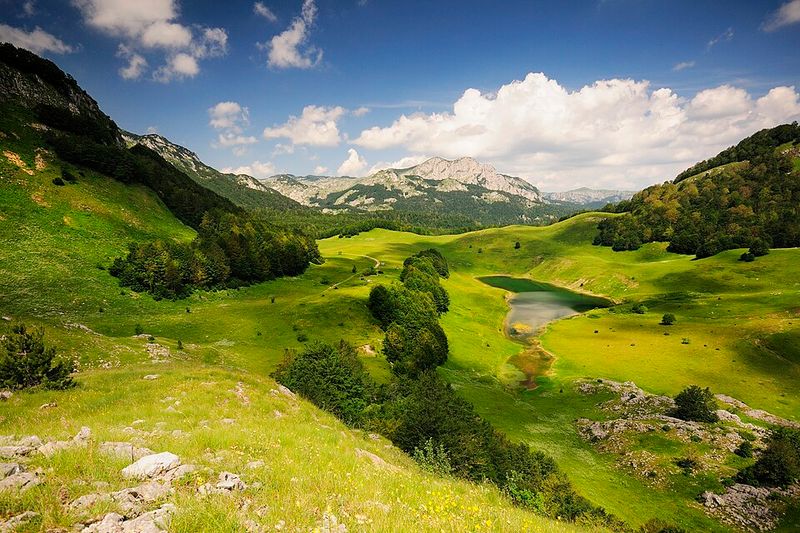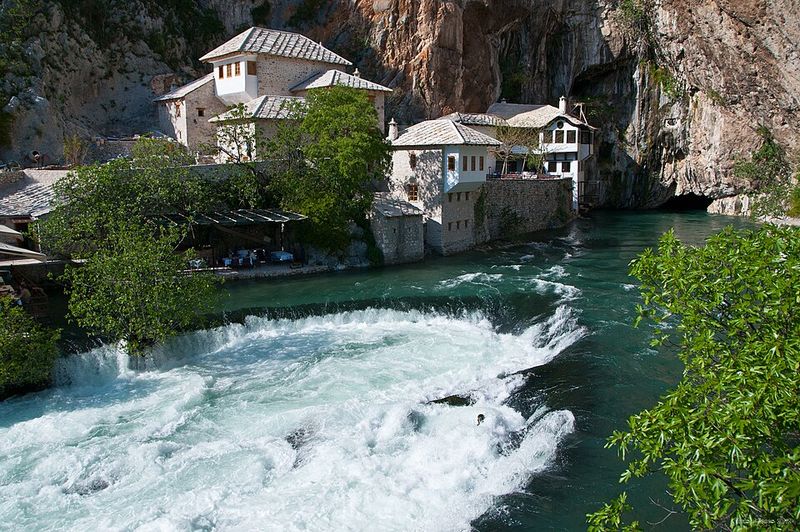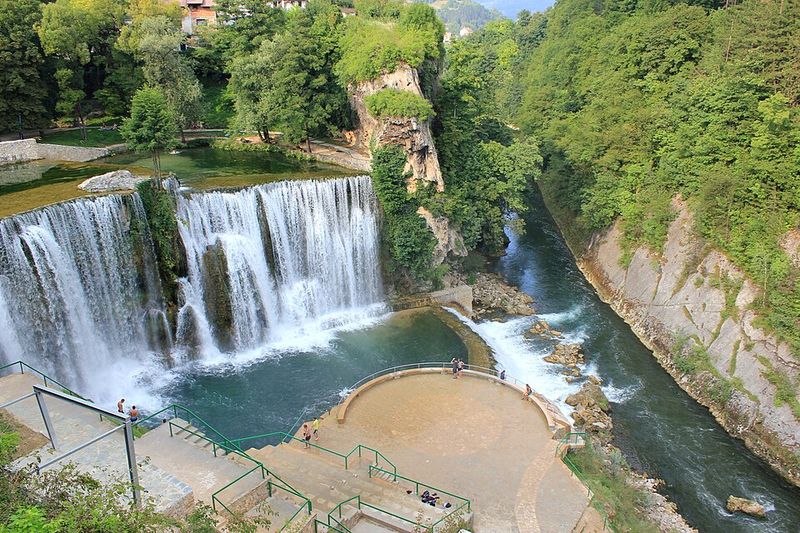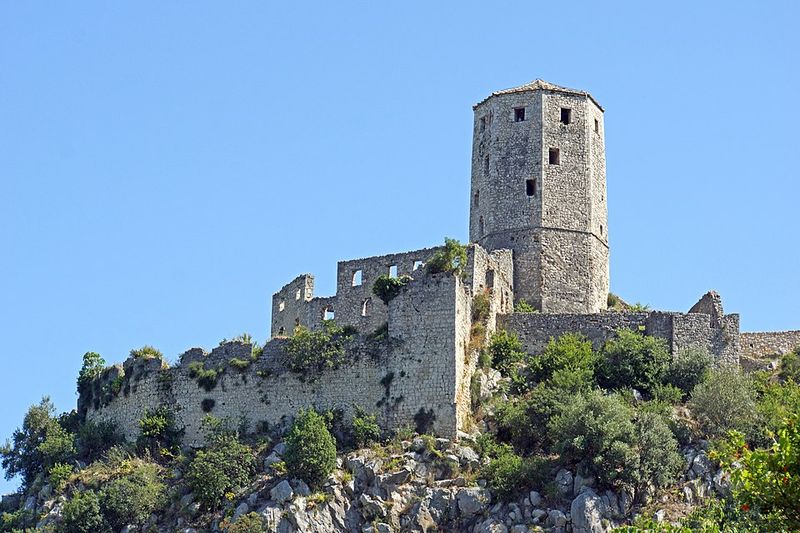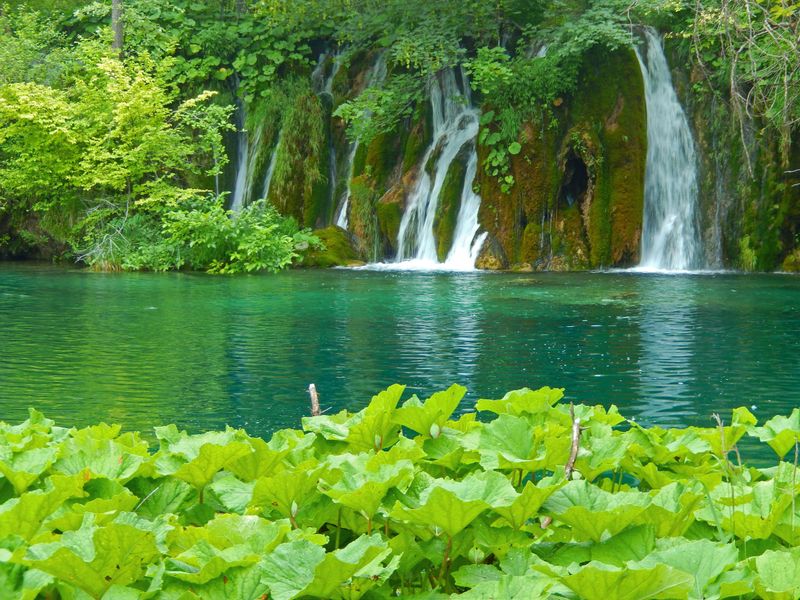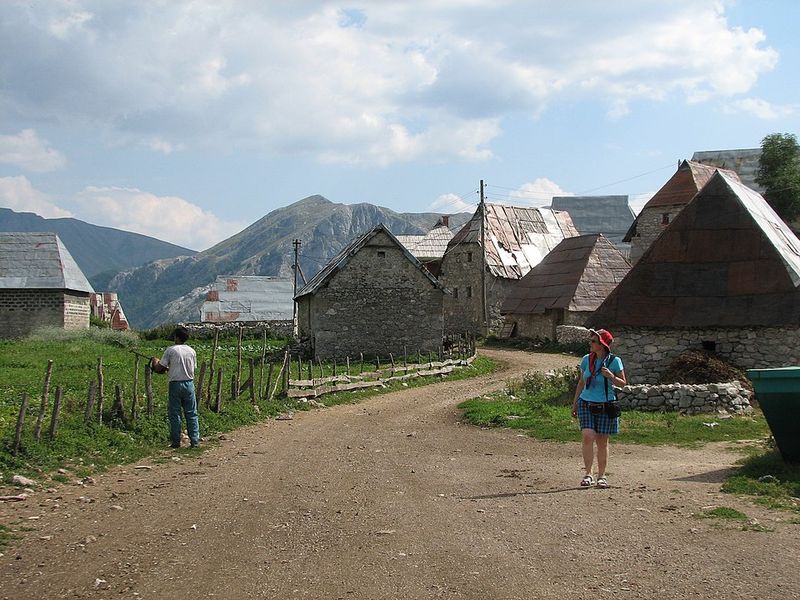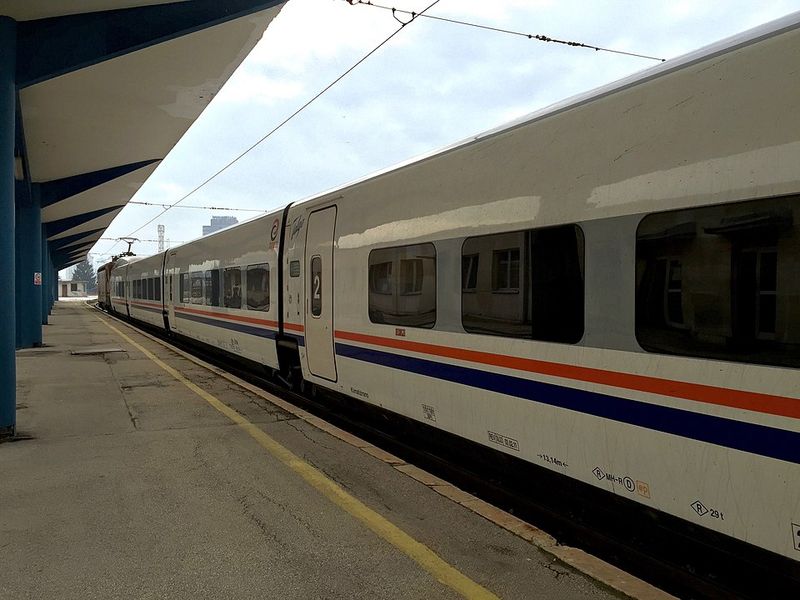Bosnia and Herzegovina remains one of Europe’s best-kept secrets, a country where ancient history blends seamlessly with stunning natural landscapes. While millions flock to more famous European destinations, this Balkan treasure offers dramatic waterfalls, medieval towns, and Ottoman architecture without the overwhelming crowds. From turquoise rivers cutting through limestone canyons to centuries-old bridges that tell stories of resilience, every corner reveals something extraordinary that will leave you wondering why more people haven’t discovered it yet.
Stari Most – The Old Bridge of Mostar
Gracefully arching over the emerald Neretva River, this 16th-century Ottoman masterpiece stands as more than just a bridge. It connects two sides of Mostar both physically and symbolically, representing hope and unity after being rebuilt stone by stone following the Bosnian War. Watch brave local divers leap from its 24-meter height into the chilly waters below, a tradition that has continued for centuries.
The surrounding old town wraps around the bridge like a living museum, with cobblestone streets winding past copper workshops and traditional restaurants. Ottoman-style houses cling to the riverbanks, their wooden balconies offering perfect views of the bridge’s elegant curve. Sunset transforms the white limestone into gold, making it the ideal moment to capture this UNESCO World Heritage site in all its glory.
Baščaršija – Sarajevo’s Living Ottoman Quarter
Step into Sarajevo’s beating heart where the clang of copper hammers echoes through narrow lanes that have bustled with traders for over 500 years. This isn’t a recreated tourist attraction but an authentic neighborhood where artisans still craft traditional metalwork using techniques passed down through generations. The aroma of freshly ground Bosnian coffee mingles with grilled ćevapi, creating a sensory experience that instantly transports you to another era.
Sebilj, the wooden fountain at the square’s center, serves as the perfect meeting point before exploring the maze of shops selling everything from hand-woven rugs to intricate jewelry. Multiple mosques punctuate the skyline, their calls to prayer adding to the quarter’s timeless atmosphere. East truly meets West here, where you can sip Turkish coffee while watching life unfold exactly as it has for centuries.
Kravica Waterfalls – Nature’s Amphitheater
Imagine a horseshoe-shaped curtain of water stretching over 120 meters wide, tumbling into a crystal-clear swimming hole that looks almost too perfect to be real. The Trebižat River creates this spectacular display in Herzegovina’s countryside, forming natural pools that invite visitors to dive in during hot summer months. Unlike many famous waterfalls hidden behind fences, you can actually swim right up to the cascading water here.
Surrounding greenery creates a natural amphitheater that amplifies the thunderous sound of falling water, making it feel wonderfully remote despite being accessible by car. Local families picnic on the grassy banks while adventurous souls jump from rocks into the deep turquoise pools. Spring brings the most dramatic flow, though summer offers warmer swimming conditions and a more relaxed atmosphere perfect for spending an entire afternoon.
Sutjeska National Park – Wilderness Untamed
Bosnia’s oldest national park protects something increasingly rare in Europe: genuine wilderness. Perućica, one of the continent’s last remaining primeval forests, shelters trees that were already ancient when Columbus sailed to America. Massive beech and spruce trees tower overhead, their canopy so thick that walking beneath them feels like entering a natural cathedral untouched by human hands.
Maglić mountain rises to 2,386 meters as Bosnia’s highest peak, challenging hikers with steep trails that reward effort with breathtaking panoramic views. Deep canyons cut through the landscape, carved by rivers over millions of years. Wildlife thrives here including brown bears, wolves, and chamois, making it a paradise for nature photographers willing to venture off the beaten path into landscapes that feel positively prehistoric.
Blagaj Tekke – Monastery at the Water’s Edge
Where the Buna River emerges from a massive cave beneath a 200-meter cliff, a 16th-century Dervish monastery clings to the rock face in perfect harmony with nature. The spring gushes forth with such force that it creates an instant river of the most incredible turquoise color you’ve ever seen. This sacred site has drawn spiritual seekers for centuries, and one visit makes it clear why.
Traditional wooden balconies hang over the rushing water, where visitors can enjoy Bosnian coffee while contemplating the dramatic scenery. The combination of towering limestone cliffs, impossibly clear water, and historic architecture creates a scene so picturesque it hardly seems real. Visit early morning when mist rises from the cold spring water, adding an ethereal quality that makes the monastery appear to float between earth and sky.
Jajce and the Pliva Waterfall – History Meets Nature
Few towns can claim a waterfall crashing through their very center, but Jajce manages this spectacular feat where the Pliva River plunges dramatically into the Vrbas River below. Medieval fortifications crown the hilltop above, creating layers of history that span from Roman times through Ottoman rule to Austro-Hungarian influence. Walking these streets feels like flipping through a living history book written in stone.
The fortress offers commanding views across the surrounding valleys, explaining why so many empires fought to control this strategic location. Below, the waterfall creates a constant roar and mist that cools the air even on the hottest summer days. Stone houses cluster around narrow lanes, their architecture telling stories of different eras. This combination of natural wonder and historical significance makes Jajce uniquely memorable among Bosnia’s smaller towns.
Počitelj – Medieval Village Frozen in Time
Climbing up through Počitelj feels like ascending through centuries, each stone step leading past houses that have stood since Ottoman times. This fortified village clings to a hillside above the Neretva River, its preservation so complete that modern life seems to have simply passed it by. The Gavrakapetan Tower dominates the skyline, its cylindrical form watching over the valley just as it has since the 15th century.
Artists have discovered this gem, often seen painting the dramatic landscape from various vantage points around the village. Stone houses with wooden balconies cascade down the slope, many converted into small galleries and craft shops. The climb to the fortress top requires effort but rewards visitors with sweeping views across the river valley. Summer heat can be intense, so morning visits offer the best light and cooler temperatures for exploration.
Una National Park – Emerald Waters and Cascades
The Una River deserves its own fan club for creating some of Europe’s most stunning water scenery. Its distinctive emerald color comes from limestone deposits, giving the water an almost supernatural glow as it cascades over countless small waterfalls and through narrow canyons. Rafting here means floating through a living postcard where every bend reveals another perfect scene.
Štrbački Buk waterfall serves as the park’s crown jewel, a wide cascade that thunders impressively during spring melt. Dense forests crowd the riverbanks, creating habitat for otters, rare birds, and even the occasional bear. Unlike crowded national parks elsewhere in Europe, Una maintains a peaceful atmosphere where you might have entire stretches of riverside trail to yourself. Swimming spots abound, though the water stays refreshingly cold even in summer thanks to underground springs feeding the river.
Lukomir – Bosnia’s Highest Mountain Village
At 1,469 meters elevation, Lukomir stands as Bosnia’s highest and most isolated inhabited village, where life continues much as it has for centuries. Traditional stone houses with wooden roofs cluster together against the harsh mountain weather, while villagers still wear distinctive folk costumes as everyday clothing rather than tourist attraction. The Rakitnica Canyon drops away dramatically just beyond the village, creating views that stretch endlessly across rugged peaks and valleys.
Getting here requires determination, with rough roads that become impassable in winter when villagers traditionally move to lower elevations. Summer transforms the surrounding meadows into carpets of wildflowers where sheep graze peacefully. Local women sell hand-knitted wool socks and demonstrate traditional crafts, their weathered faces telling stories of hard but meaningful lives. This isn’t a museum or theme park but a genuine glimpse into mountain culture that has survived against considerable odds.
Sarajevo to Mostar Train Journey – Moving Through Time
Sometimes the journey matters as much as the destination, and this railway route proves that point magnificently. Built over a century ago, the track winds through the Neretva Canyon, crossing bridges that seem impossibly delicate while plunging through tunnels carved straight through mountain faces. Windows frame constantly changing views of turquoise rivers far below, mountain villages perched on impossible slopes, and forests that seem untouched by human presence.
The train itself moves at a leisurely pace that would frustrate anyone in a hurry but delights those who understand that speed would ruin the experience. Old-fashioned carriages add to the nostalgic atmosphere, making it easy to imagine earlier travelers making this same journey decades ago. Local passengers board at tiny stations, carrying everything from shopping bags to live chickens. This isn’t just transportation but a three-hour moving observation deck showcasing Bosnia’s dramatic landscape in the most authentic way possible.
